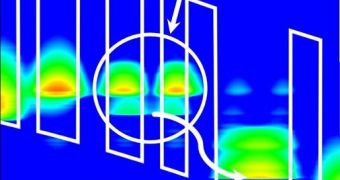For the first time since quantum cascade lasers (QCL) were created, physicists have managed to improve their efficiency to such a degree that the devices are able to produce more light than heat. This is a wonderful breakthrough in this field of research, scientists at the Northwestern University say. All the work leading to the innovation, as well as the compact, mid-infrared laser diodes themselves, were conducted at the university. One of the major applications possible for the new devices is the construction of chemical-sensing detectors to identify hazardous chemicals even in diluted samples.
The investigation was conducted by the Walter P. Murphy Professor of Electrical Engineering and Computer Science Manijeh Razeghi. The expert holds an appointment in the NU McCormick School of Engineering and Applied Science, and is also the author of a new paper detailing the findings, which appears in the January 10 issue of the renowned scientific journal Nature Photonics. Parts of the funds that were used for this research came from the US Defense Advanced Research Projects Agency (DARPA), under the Efficient Mid-Infrared Laser (EMIL) program. Additional funds were secured from the Office of Naval Research (ONR).
“This breakthrough is significant because, for the very first time, we are able to create diodes that produce more light than heat. Passing the 50 percent mark in efficiency is a major milestone, and we continue to work to optimize the efficiency of these unique devices,” Razeghi says. Other research groups working on improving QCL only managed a 40-percent level of efficiency, even if they used cryogenic temperatures in their work. The Northwestern team managed to reach an efficiency mark of 53 percent, when the diodes were operating at 40 degrees Kelvin (-233.15 degrees Celsius, -387.67 degrees Fahrenheit).
At this point, the laser industry can produce highly efficient near-infrared lasers, with a wavelength of about one micron. This ability was achieved after many years of study and innovation, but the efficiency curve moves downhill when passing the one-micron mark. When exceeding the three-micron mark, building efficient laser diodes becomes increasingly complex, and experts say that the very architecture of the lasers needs to be changed. The team, featuring experts from the NU Center for Quantum Devices (CQD), managed to reach their efficiency mark at a mid-infrared wavelength of 4.85 microns.

 14 DAY TRIAL //
14 DAY TRIAL //